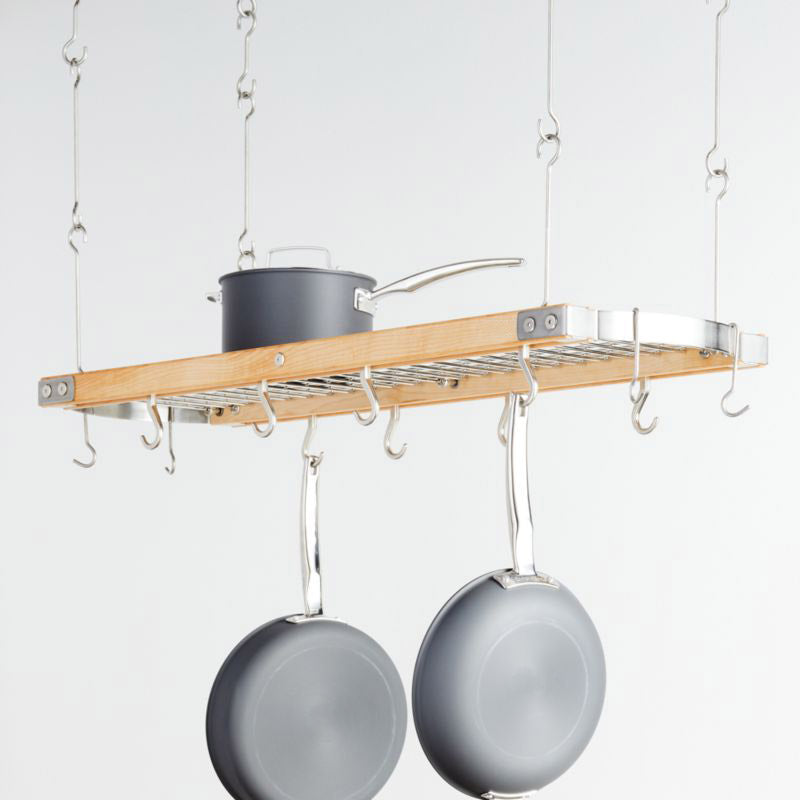
7+ Common Mistakes People Make with Nonstick Cookware
Share
Nonstick cookware has many advantages to the user. It’s easy to clean, safe in the oven, and lasts for years with proper care and use. However, there are several ways in which nonstick cookware can be misused or abused, causing damage to the cookware itself and making it unsafe to use in the future.
Here are some of the most common mistakes that people make with nonstick cookware, along with tips on how to avoid them when using your nonstick pots and pans.
1. Never Use It for Food Storage
Most nonstick cookware has a coating that prevents food from sticking to it, which makes cleanup easier. One of the most common mistakes people make when using nonstick cookware is that they store food on it after cooking.
Unfortunately, even small amounts of exposure to acidic foods can destroy that coating. To prevent that from happening, store food in containers or glass casserole dishes—not on top of or inside your pots and pans. This will help keep your cookware in good shape so you can continue to use it for years to come.
Be sure to only use your pots and pans for cooking, not for storing leftovers or anything else.
2. Avoid Scratches
No one wants scratches on their cookware, but it’s especially important to avoid them with nonstick. Scratches can cause the coating to flake off and reduce the non-stick capabilities. These days, most nonsticks are coated in ceramic instead of Teflon; if you notice scratching, you might want to find out if it’s possible to replace your pans with ones that don’t scratch. If that isn’t an option for you, stick to using wooden or silicone utensils on your nonsticks. Also be sure not use metal spoons or spatulas on nonsticks; there is no fix for scratched nonstick pans and tossing them out may be your best bet.
3. Don't Heat Oven to 350°F or 180°C
Even though nonstick cookware is often labeled as oven-safe, you should avoid heating it to 350°F (180°C) or higher. Because nonstick pans are made from a synthetic material, they can't take as much heat as their metal counterparts. Metal pans will expand and contract a bit during heating and cooling. If you leave a metal pan in a hot oven for an extended period of time, it's possible for the pan to warp slightly or lose its shape. In contrast, if you leave a nonstick pan in an overly hot oven for too long, you run the risk of melting and damaging your cookware.
4. Don't Overheat Pans
Just because you have a nonstick pan doesn’t mean you can heat it to ultra-high temperatures. Typically, nonstick coatings aren’t designed to withstand temperatures higher than 350 degrees Fahrenheit. If you regularly cook at or above that temperature, your cookware will lose its effectiveness over time—and could actually catch fire. Regular nonstick pans are still safe at up to 500 degrees F, but avoid cooking with any material above that temperature if you want your cookware to stay effective for as long as possible. Also note that extremely acidic foods can deteriorate coatings more quickly than normal cooking does.
5. Don't Use Metal Utensils
One of the biggest mistakes people make when using nonstick cookware is to use metal utensils. It might not ruin your pan or anything, but it does void its warranty and can lead to unnecessary scratches. Instead, use wooden or silicone utensils like this one. If you really want to scratch up your pans, get a cast iron one—metal utensils are encouraged! Otherwise, keep them far away from your nonstick pan.
6. Never Rinse with Cold Water
There’s a misconception that rinsing nonstick cookware with cold water is more effective than rinsing it with hot. Actually, rinsing it in warm or hot water will help your nonstick cookware last longer since water at higher temperatures can penetrate into small cracks, causing them to widen. Thus, you should avoid cold-water rinses because they could weaken your cookware over time. If you’re looking for convenience, consider investing in a nonstick cleaner instead. Cleanup may be easier, but it isn’t worth risking shortening the life of your favorite pots and pans!
7. Never Use if the Coating Starts to Peel
Most nonstick cookware brands are made to withstand scratches and scrapes, but if your pans ever start looking like they’re losing their coating, get rid of them. If you notice that food is sticking to your pan more than usual, there’s a chance it could be time for a replacement. Most non-stick surfaces last around two years. But of course, if you take good care of your pots and pans by not using metal utensils or heating them beyond reasonable temperatures (i.e., never leave them on high) then yours will probably last longer than that.
